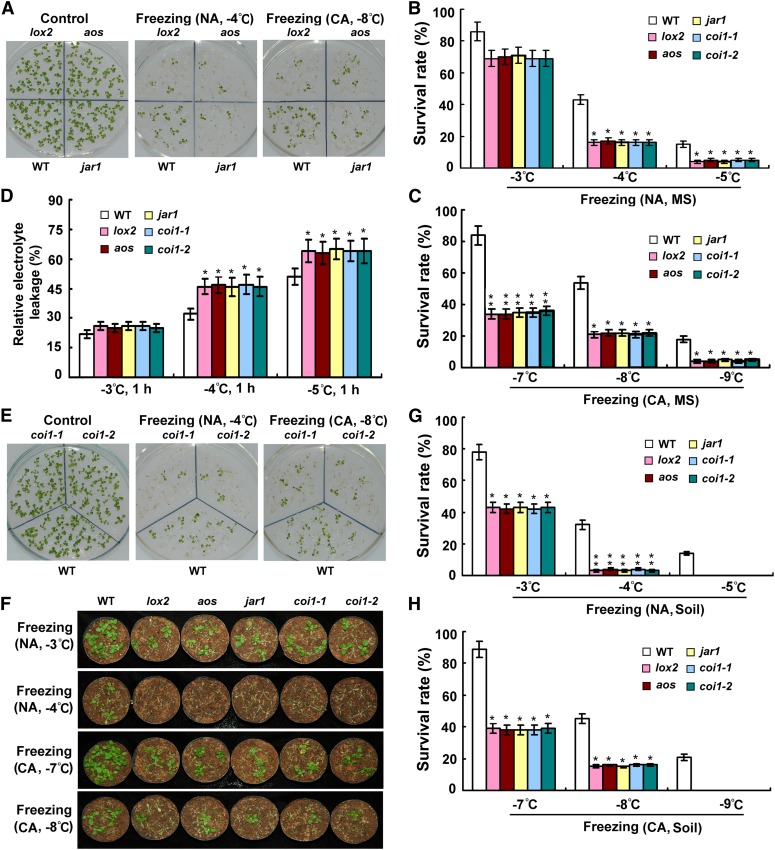Figure 2.
Freezing Tolerance of Mutants Involved in Jasmonate Biosynthesis and Signaling.
(A) Freezing phenotypes of MS medium–grown lox2, aos, and jar1 mutant plants with or without cold acclimation. Nonacclimated (NA) 12-d-old seedlings were treated at −4°C for 1 h, and cold-acclimated seedlings (2 weeks at 4°C) were exposed to −8°C for 1 h, followed by recovery at 22°C for 4 d. Experiments were performed three times with similar results. WT, the wild type.
(B) and (C) Survival rates of various nonacclimated (B) and cold-acclimated (C) mutant plants after exposure to indicated freezing temperatures. Error bars show sd from three replicates. CA, cold-acclimated (2 weeks at 4°C); MS, seedlings grown on MS medium; NA, nonacclimated.
(D) Ion leakage assays of mutants treated with indicated freezing temperatures. Error bars show sd from three replicates.
(E) Freezing phenotypes of coi1-1 and coi1-2 mutants with or without cold acclimation. Nonacclimated 12-d-old seedlings were treated at −4°C for 1 h, and cold-acclimated (2 weeks at 4°C) seedlings were exposed to −8°C for 1 h, followed by recovery at 22°C for 4 d. Experiments were performed three times with similar results.
(F) Freezing phenotypes of various soil-grown mutants with or without cold acclimation. Nonacclimated 18-d-old soil-grown seedlings were treated at −3 or −4°C for 1.5 h, and cold-acclimated seedlings (2 weeks at 4°C) were exposed to −7 or −8°C for 1.5 h, followed by recovery at 22°C for 7 d. Experiments were performed three times with similar results using over 100 plants per treatment.
(G) and (H) Survival rates of various nonacclimated (G) and cold-acclimated (H) soil-grown mutant plants after exposure to indicated freezing temperatures. Error bars show sd from three replicates. CA, cold-acclimated (2 weeks at 4°C); NA, nonacclimated; Soil, seedlings grown in soil. *Differences between the mutant and the wild type are significant (P < 0.05). **Differences between the mutant and the wild type are highly significant (P < 0.01).

